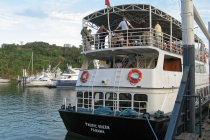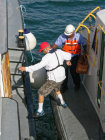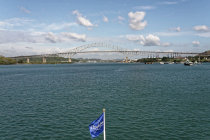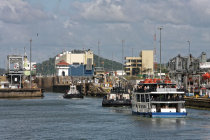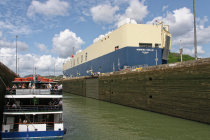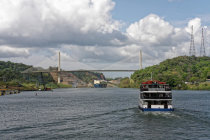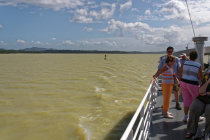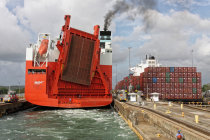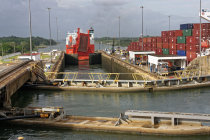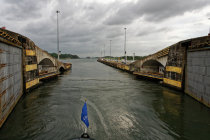Plans for the Panama Canal go back to the 16th century when the conquistadors needed a safe and fast way to get the
looted Inca gold and silver to the Atlantic side for shipping to Spain.
In the 19th century Ferdinand de Lesseps started a lockless
Canal project, but malaria and yellow fewer brought it to a grinding halt. It would not have worked anyway because of large tidal
difference between the Pacific and Atlantic.
The US took over and finished the Canal with locks in 1914.
The Canal features a total
of 6 locks on both sides to raise the ships to Gatun Lake which sits 26 m above sealevel. The water of this rain filled
artificial lake is used to operate the thirsty locks.
At the last day of the 20th century the US finally handed the
Canal over to the Panama government.
Presently the Canal is one of the most important waterways in the world and a major source of
income for Panama.
Recent droughts have sometimes limited the cargo for the largest ships.
Onboard the Pacific Queen we did a full transit
from the Pacific to the Atlantic side in January 2009.
